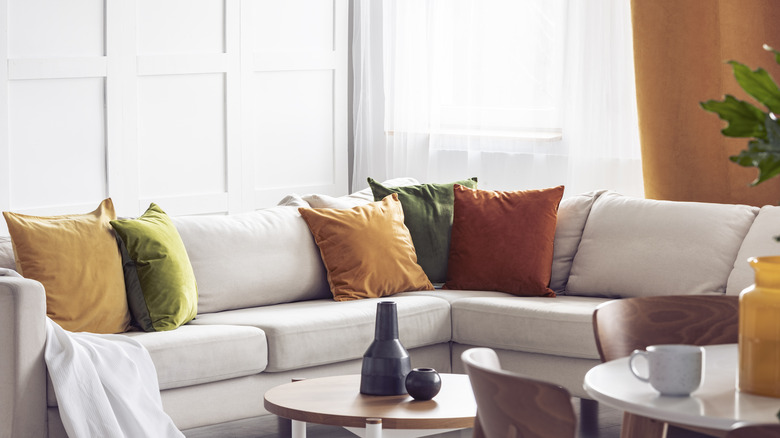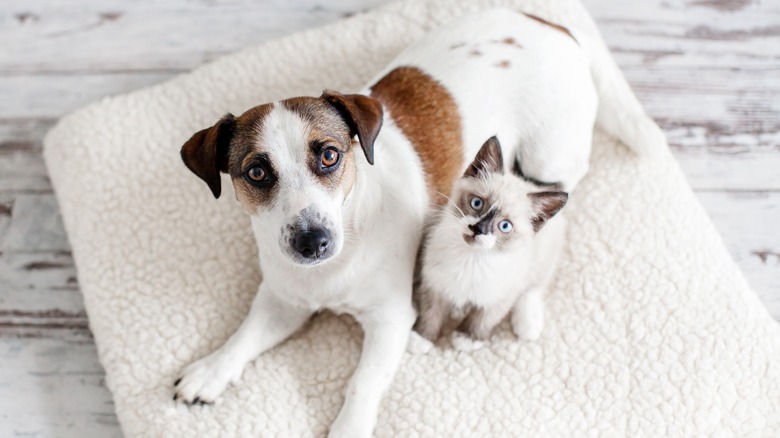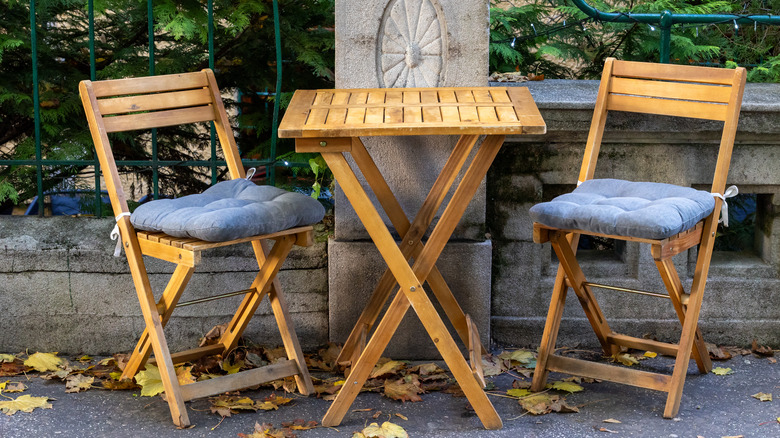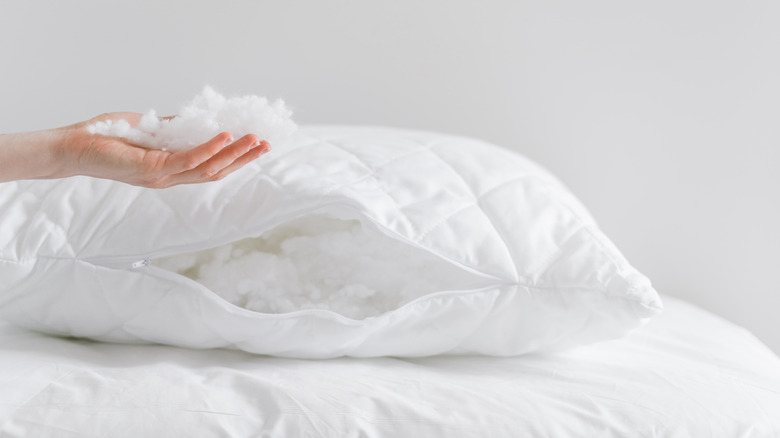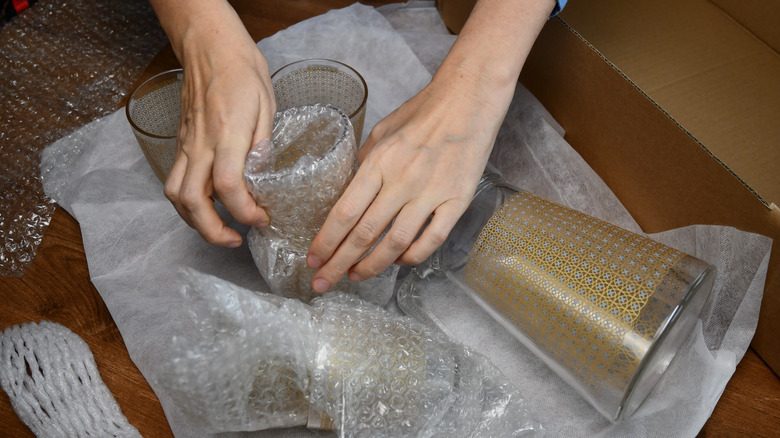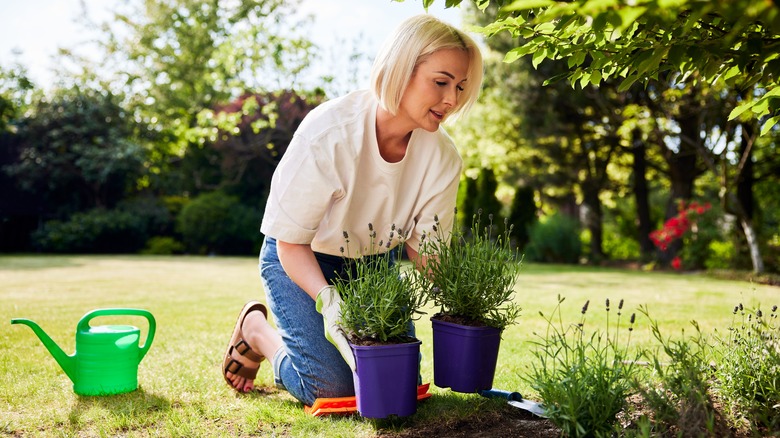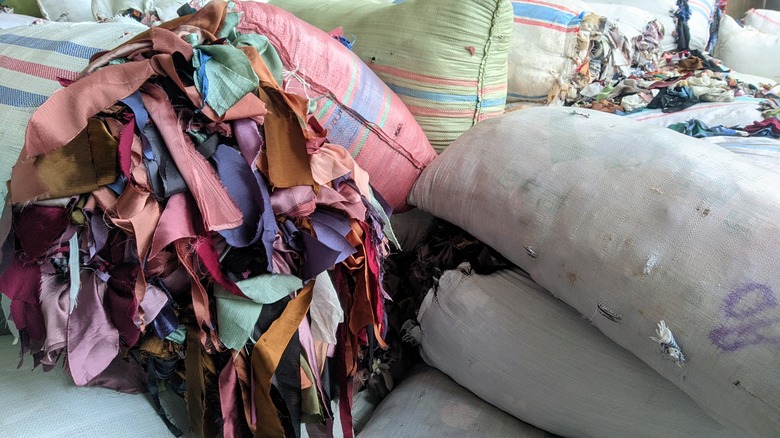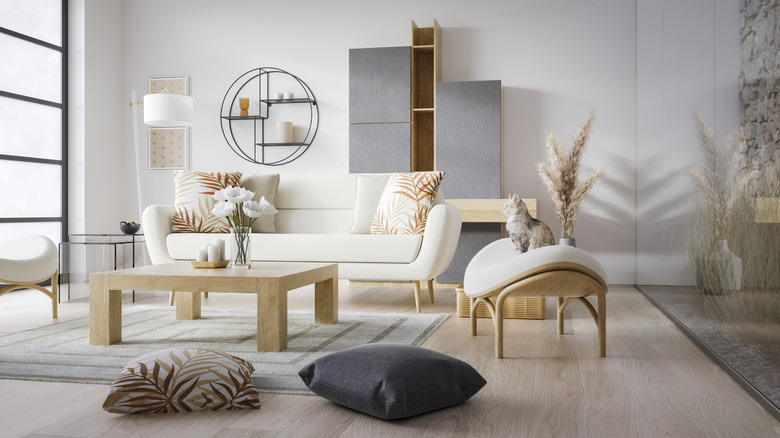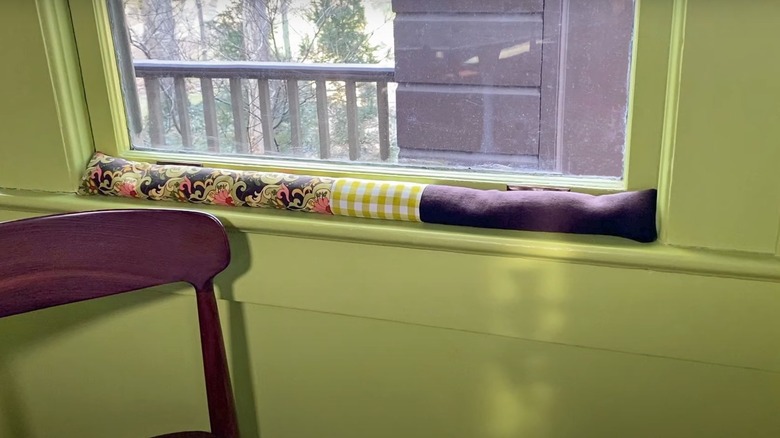9 Clever Ways To Repurpose Old Cushions Around Your Home
If you're considering getting rid of an old sofa, don't throw it out just yet. Instead, discover how to repurpose the cushions around your home. Even if you've worn through your existing couch cushions or simply decided that your decorative bed pillows are no longer your style, that doesn't have to be the end of their lives. With a bit of creative thinking, you can turn your old cushions into some of the following nine items, helping you to further stretch your dollar. According to data from Statista, the average household spent over $2,600 on home furnishings in 2022, and even small repurposing projects can help you spend less.
Thanks to the fact that pillows and cushions typically have very simple designs, there is plenty of room to play around with potential new uses. Add on the fact that they're often made of durable or particularly decorative materials and stuffed with a fluffy filling, and you have tons of raw material that can be incorporated into other projects. Upcycling something as small as an old cushion might seem unnecessary, even if you're trying to find ways to be more eco-friendly, but simple transformations like this can encourage you to think more creatively about items you would typically toss in the trash without a second thought. Who knows — you might even end up with a brand-new, free piece that you can use every day.
1. Pet bed
Many of us want to treat our pets like royalty, but unfortunately, doing so often requires a king-sized budget. Luckily, however, there are plenty of ways to create items for your pet on your own and typically for significant savings. If you have a smaller pet — or a very large cushion — one of the simplest items you can create to keep your home stylish when you have pets is a bed for your furry friends. You can simply place the cushion on the floor or in one of your pets' sleep spots. Or, if you have a larger pet, just sew multiple cushions together.
2. Tote bag
While they serve completely different purposes, tote bags, and cushion covers have a very similar construction — so much so that creating your own tote is often as simple as removing the stuffing from your cushion and adding on a handle. In some cases, you might also have to open up one of the sides of the cushion with a seam ripper or small pair of scissors to create that classic bag shape, then sew the raw edges to ensure the fabric doesn't fray. If your cushion already has a side that opens and closes with a zipper, however, just sew on a handle and your work is done.
3. Seat cushion
Wood, metal, and plastic chairs are typically much easier to clean than upholstery, a characteristic that can be quite helpful when they're being used outdoors or in the dining room where mess is inevitable. However, those materials often lack the comfort that cushioning provides. If you're looking for a middle ground, consider creating your own removable cushions. With the addition of a couple of ribbons attached to two corners of your old cushion, you'll have a seat cushion that you can tie to the back of your chair when in use, remove when it's not necessary, and wash when it gets dirty.
4. New pillow stuffing
If you're still planning to part with the outer portion of your cushion but you don't want the whole thing to go to waste, consider repurposing the stuffing for another project. This can be as simple as removing the insert and swapping out the cushion's case for something you like more, or it can be a more involved sewing project, like repurposing your old bedsheets into a new cover. Extra stuffing can also come in handy for other creations like stuffed animals, draft blockers, and even fluffing up a pillow that has gone a bit limp due to frequent use or washing.
5. Packing material
Moving is never easy, but you can make the process much simpler by ensuring that all of your fragile items are carefully packed and well-cushioned. Obviously, broken glasses and plates are a nuisance, and having to continue to unpack boxes that contain these broken pieces is a safety hazard. To help avoid this fate in the first place, consider using items that are already in your home, like old cushions, as packing material. Keep the cushions as they are if you need to fill large gaps of space or remove the stuffing to act as a substitute for packing peanuts or crinkle paper.
6. Knee pads for gardening
Gardening is oftentimes seen as a relaxing and mindful activity, but it can actually be much harder on the body than many people expect. For example, gardening projects where you have to kneel for an extended period of time can do a number on your knees and lead to aches and pains after you wrap up. To help reduce this strain, consider giving yourself a soft spot to kneel in the form of an old cushion. Leave it flat and lay it between your knees and the ground to create a softer surface, or fold it in half if you're looking for even more of a barrier.
7. Rags
Items made of or covered in fabric will naturally begin to wear out over time, but there is one way you can upcycle just about any of these items before tossing them in the garbage: turn them into rags. Cushions covered in softer fabrics can make fantastic candidates for this treatment, especially if you're on the hunt for a fabric that's smooth enough to use on more delicate surfaces. Simply remove the stuffing from your cushions, cut down the fabric, and stow the pieces away until it's time to clean. However, ensure your pieces don't have details that could scratch surfaces like beading or embroidery.
8. Floor cushions
If you're in need of some extra seating but don't have a ton of square footage, floor pillows can maximize comfort and seating space. They're easy to stow away when not in use, cozy to sit on, and can even bring a bit of a bohemian flair to your home. They're also incredibly easy to make yourself out of existing cushions. If you already have cushions that are large enough to work as a floor cushion, obviously, all you need to do is place them on the floor. If they're a bit small or thin, however, you can attach multiple together with a couple of stitches.
9. Draft stopper
If you live in an older home, you're likely familiar with the toll that drafty windows can take on your energy costs. The best way to reduce those costs is by upgrading your existing setup for something more energy efficient, but many people aren't willing or able to take on a project like that at the drop of a hat. In the meantime, consider creating some draft stoppers out of old cushions. If your cushions are the correct size already, they can simply be wedged up against your windows or doors, but custom-sized draft stoppers can also be made with some deconstruction and sewing.
